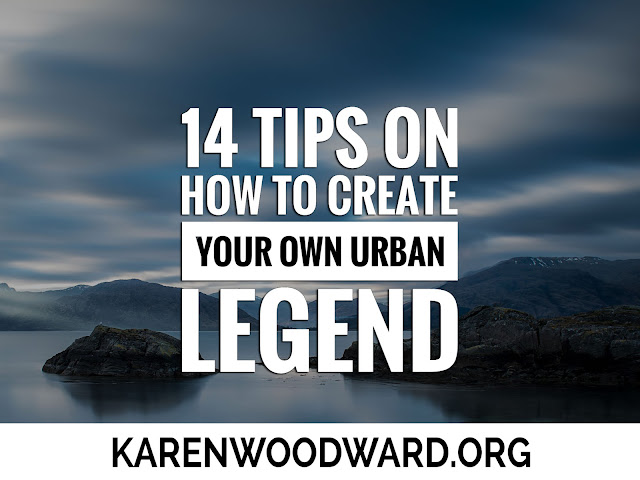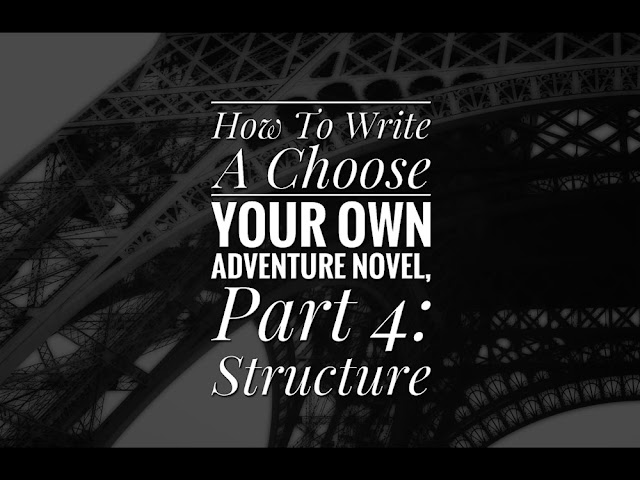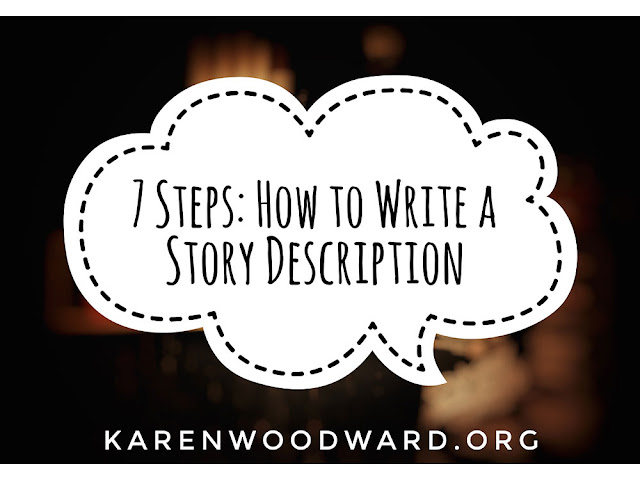This would have been a great thing to do for Halloween! Oh well, better late than never. Today I want to talk about something that has fascinated me for ... well, for as long as I remember: urban legends.
As I’m sure you know, an urban legend “is a form of modern folklore consisting of fictional stories, often with macabre elements deeply rooted in local popular culture. (Wikipedia)”
Generally, urban legends spring up on their own, but there’s nothing to say that we can’t create our own! Why would we want to create one? Well, to scare the pants off our readers! And because it’s kind of fun. :-)
The Ingredients of an Urban Legend:
Antagonist: A proper villain.
Protagonist: An ordinary, more-or-less innocent person. Everyman/woman.
1. Fear of strangers. The bad guy is a foreigner, an outsider, a stranger.
This is a primal fear. The thing that waits in the darkness outside the ring of firelight. Closely related is the idea that one of the people huddled around the fire isn’t what they seem. They are a monster wearing a human face.
2. Importance of ritual and rule-following.
This is generally part of the moral: Follow the rules and you’ll be okay, break them and the monsters will get you. Or, which is more-or-less the same, behave morally, resist temptation and the boogyman will pass you by. Give in and you’ll be monster food.
3. The author is anonymous.
The event itself is said to have happened to a friend or a friend of a friend, but the author herself doesn’t give a name or any way to trace her down.
4. Vague. No specific examples are given, nothing that can be definitely traced.
Sometimes it’s said that the information came from “an advisor close to the president” or perhaps even a prominent person is named, but in such a way that it’s difficult to pin down anything concrete. Public officials say many things, do many things, and it’s not always easy to trace them.
5. Electronics don’t work.
It seems that whenever the supernatural is involved—and most urban myths I’ve read include some sort of supernatural element—anything electronic dies a spectacular death.
6. The protagonist is alone.
This is classic storytelling. When the protagonist confronts the Big Bad they are (almost) always alone. Let’s face it, if the protagonist had help the stakes wouldn’t be as high, it wouldn’t be as interesting.
7. It is said to be a true story.
We all know urban legends aren’t true, but they’re interesting precisely because a small part of us thinks, or wants to think, that it COULD be. That’s what happens when a story aggressively puts itself forward as being true, as being just another story about something that happened to a friend.
8. Event is said to have happened locally.
I think this point is connected to the fact that we tend to prefer the stories of our friends. What happens locally has the potential to affect us.
9. Event is said to have happened recently.
Events that happened a few years ago or last decade, even sensational ones, aren’t as interesting to us as those that happened earlier today, or yesterday, or a few weeks ago.
10. The event happened to someone the teller knows. Or a friend of a friend.
I think that, rightly or wrongly, we tend to put more weight in the stories our friends tell us, even friends of friends.
11. The event is macabre, horrific, sensational.
In your own life, what scared you the most? We’ve all been scared. When I was a kid I ate pizza too fast and started choking. Lucky for me my dad knew the Heimlich maneuver and I was okay. For a few weeks after that, though, I was terrified of choking.
In itself fear of choking is a bit tame, but I suppose it depends on WHAT the person chokes on.
12. Give it a moral.
I think this is implied by some of the above, but it’s so important it deserves its own point. Urban legends have a moral. For example, take the urban legend “The Hook.” From Wikipedia:
“The basic premise involves a young couple parking at a lovers' lane. The radio plays while they make out. Suddenly, a news bulletin reports that a serial killer has just escaped from a nearby institution. The killer has a hook for one of his hands. For varying reasons, they decide to leave quickly. In the end, the killer's hook is found hanging from the door handle.”
Here, since the couple left lovers’ lane, they get to live. If they hadn’t stopped their ‘activities’ and left, though, things would have turned out bloody.
13. I say this tongue-in-cheek: It helps if a blurry photograph is involved!
Self-check: Would your urban legend disturb you personally IF it were real?
Something to try if you’re looking for inspiration: Make your own urban legend by taking the beginning of one and melding it with the ending of another. Here’s a list of urban legends.
Every post I pick something I love and recommend it. This serves two purposes. I want to share what I’ve loved with you, and, if you click the link and buy anything over at Amazon within the next 24 hours, Amazon puts a few cents in my tip jar at no cost to you. So, if you click the link, thank you! If not, that’s okay too. I’m thrilled and honored you’ve visited my blog and read my post.
Many writers have sung the praises of this book: Write Your Novel From The Middle: A New Approach for Plotters, Pantsers and Everyone in Between, by James Scott Bell. Personally, I start from the ending, but to each their own. Bell’s approach has been something of a revelation.
From the blurb: “What if, amazing as it may seem, the place to begin writing your novel is in the very middle of the story? According to #1 bestselling writing teacher James Scott Bell, that's exactly where you'll find your story's heart and heat. Bell's "Mirror Moment" is the secret, and its power is available to any writer, at any stage of the writing process. Bringing together years of craft study and personal discovery, Bell presents a truly unique approach to writing a novel, one that will stand the test of time and serve you all your writing life.”
That’s it! I’d love to read your urban legend. Share it in the comments ... if you dare (cue scary music). Or post it on your webspace and leave a link. Whatever you do, good writing! I’ll talk to you again on Friday.
Cheers!















